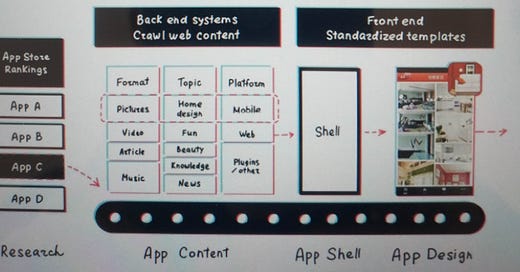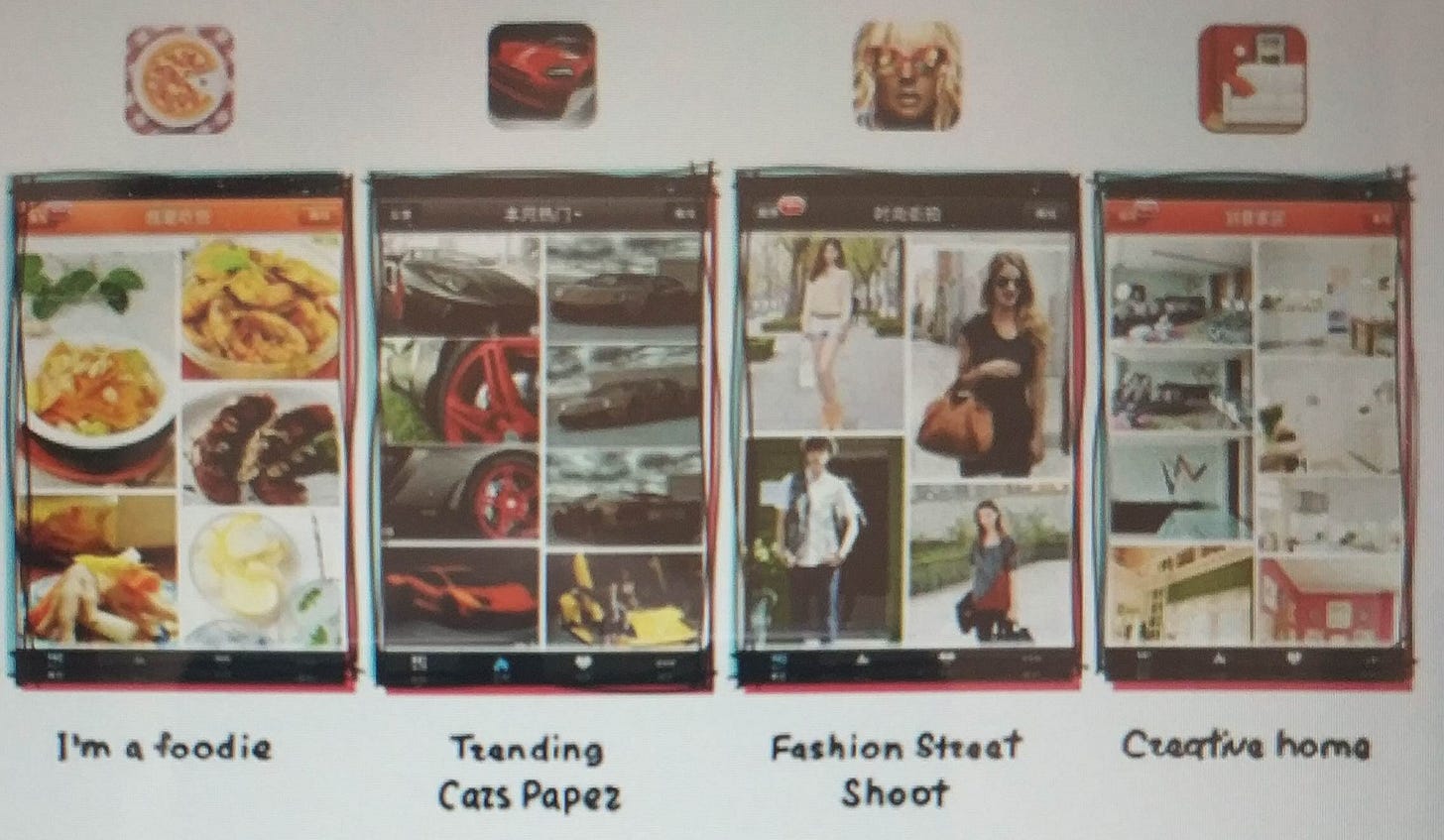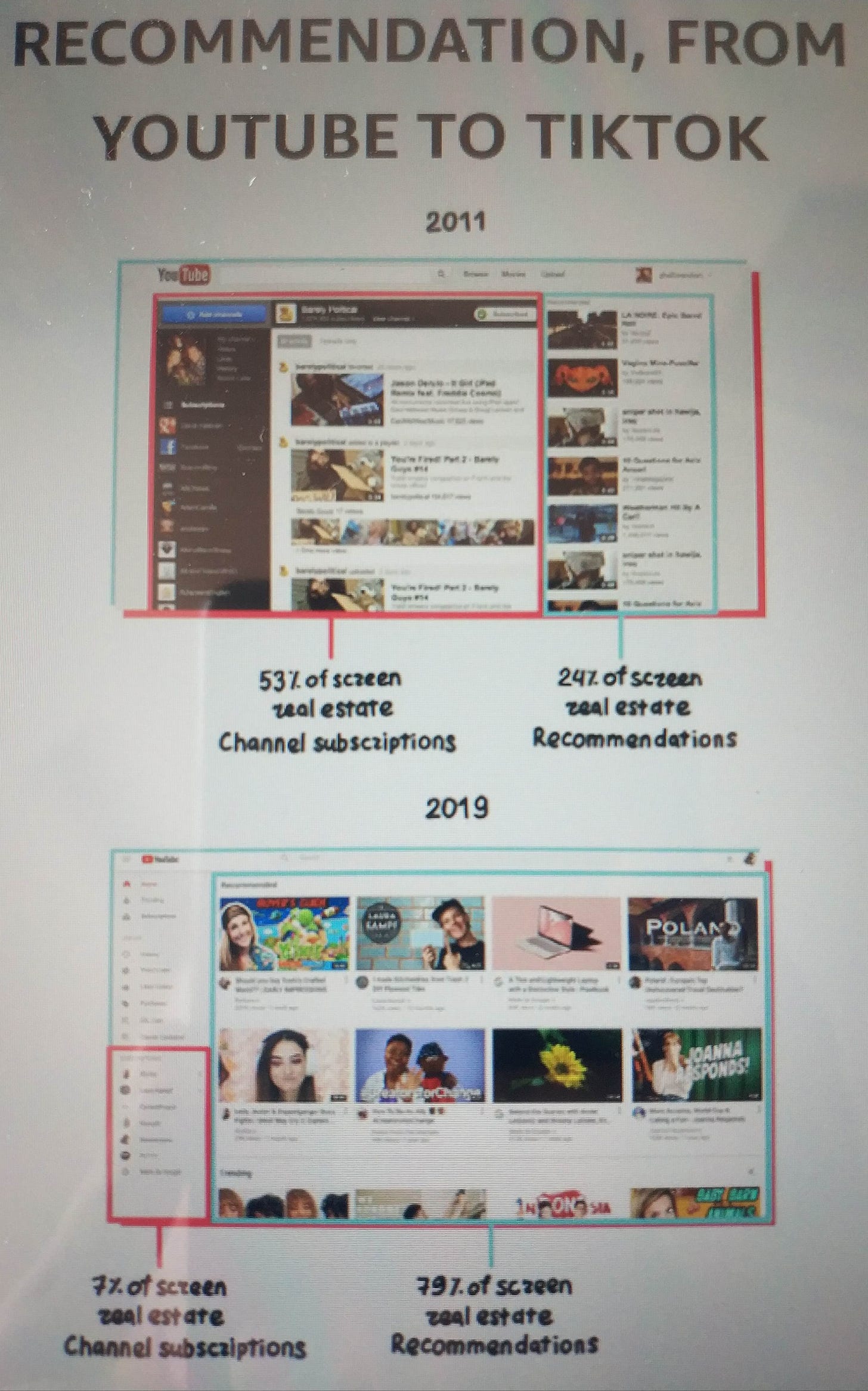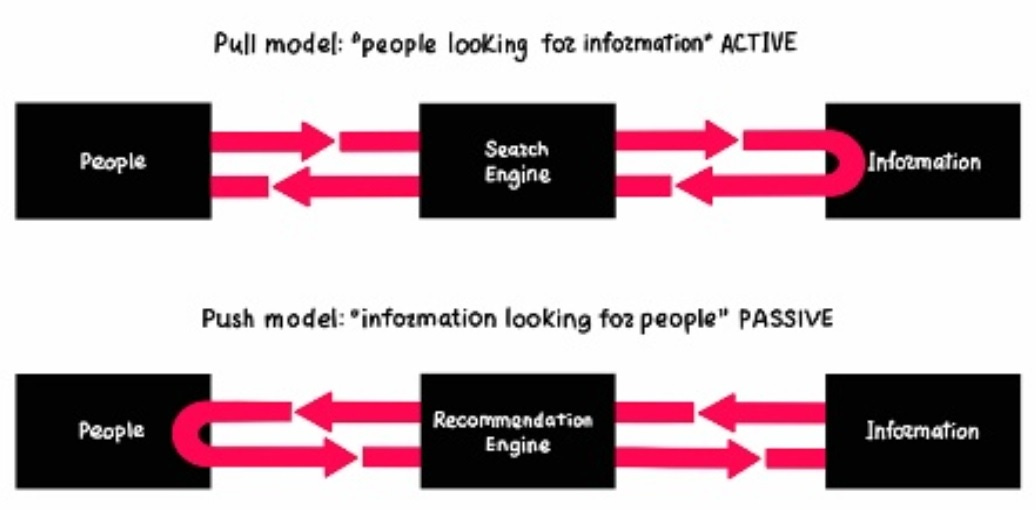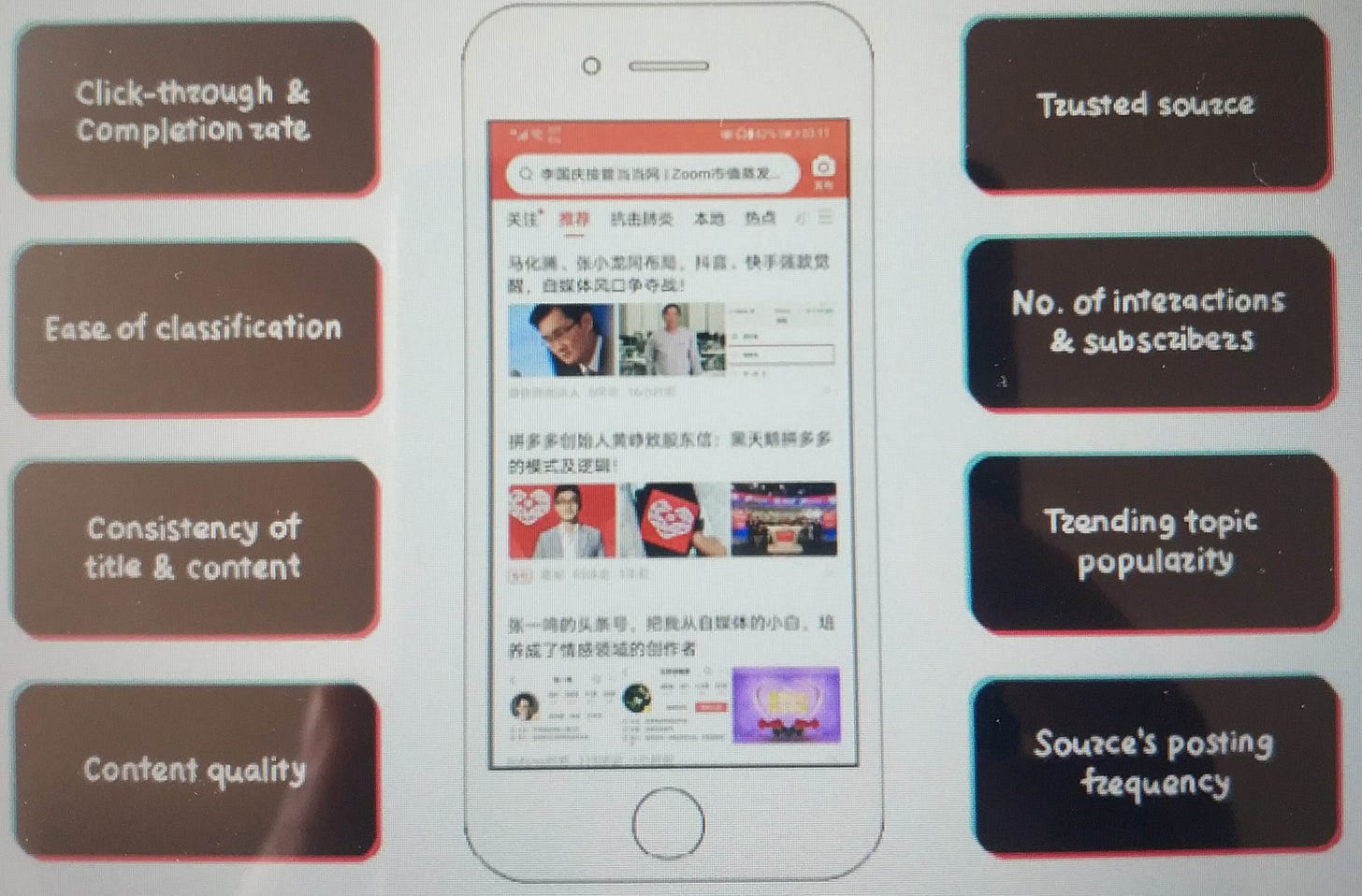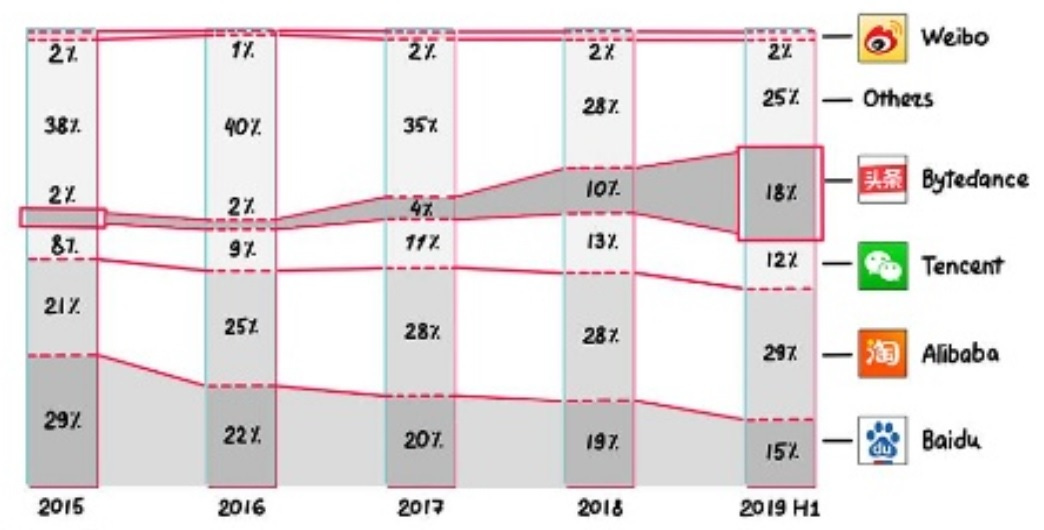With this 27th edition of Outside In, I am introducing a 2nd new genre of articles called ‘What I Read (WIR)’ which will cover curated snippets of compelling stuff from truly global content that I have read myself – from books, reports, knowledge papers, presentations, social posts and the like. Furthermore, I am inviting you to share with us – with some advance notice – any particular content pieces that might of your interest and you want us to share a summary WIR of the same after reading it. We will try and write a concise compilation of the same
In this week’s WIR piece, let us deep dive into the key takeaways of Matthew Brennan’s well acclaimed book ‘Attention Factory: The Story of TikTok and China’s ByteDance’. I have followed Matthew’s coverage of the company over the last few years and believe these are must-read snippets about the evolution of one of most social video pioneers of our time. Since it will be a long read, I have broken this post into 2 parts for easier readability. Here we go…with Part 1…
A) The Learnings: Early Days of ByteDance and Raw Avatars of Tiktok
Becoming an Online Influencer went beyond making interesting Videos: Click Farms. Hundreds of these underground businesses operated across China, playing a vital role in the modern online attention economy. Skirting around bot- traffic detection systems and occasionally having accounts shutdown was an occupational hazard. Software that virtually emulated phones could be easily detected. Despite the equipment and electricity costs, it was much more reliable to use physical devices; cheap Android smartphones controlled via USB cables with software simulating a real human’s taps and swipes. Helping others trick the algorithms and manipulate online attention was a lucrative business, and there were always willing customers. Fake likes, zombie followers, simulated livestream audiences, automated comments, rigged competition voting, mass reporting of content to trigger takedowns– the list of “(click farm) services” was practically endless.
There were set (customer reach) packages that got sold (to interested customers): With focus on Douyin for instance, 350 yuan ($ 51) got you 10k likes, 100k views, 5k shares, and 50 comments. Having noted the above, it was, however, a steady realization that “It’s the shares that matter,” more importantly than ‘watch completion rate’.
Video Popularity Ranking Mechanics (Gaming TikTok Algorithm 101):The moment a video is uploaded to TikTok, the clip and its text description are queued up to go through an automated audit. Computer vision is used to analyze and identify elements within the clip, which are then tagged and categorized with keywords. Videos suspected of violating the platform’s content guidelines are flagged for human review. The audit cross- checks the footage against a massive archive for duplicate content. This system is designed to prevent plagiarism, as well as the practice of downloading popular videos, removing the watermark, and re-uploading them to a new account. Videos identified as duplicate have their visibility significantly reduced. After the screening process, the video is released to a small pool of a few hundred active users. Metrics such as the number of complete views, likes, comments, average play length, and shares will be analyzed to gauge the video’s popularity within its vertical category. Those that perform well pass through to the next level, where the video is then exposed to thousands of active users. Again, more metrics will be evaluated, with the top- performing videos passing on to the next level, where they gain exposure to an even larger audience. As the video moves up to higher tiers, it will gain exposure to potentially millions of users. The process isn’t entirely run by an algorithm. At the higher levels, a person on the content moderation team will watch the video and follow a set of strict guidelines to confirm that it does not violate the platform’s terms of service or have any copyright issues. There are cases of videos reaching up to a million views only to suddenly be taken down once they hit the human review process.
One of their big early realizations was how social networking and obtaining information were two separate things. On a platform like Fanfou, or Twitter, users were both communicating with friends, staying in touch, and sharing thoughts. At the same time, they were also consuming information such as breaking news or articles of interest. These two activities were easy to conflate but represented two different needs. Clarity around this distinction later helped Yiming in setting ByteDance’s early direction.
The Naming of ByteDance: After much brainstorming, the team came up with “ByteDance,” allegedly inspired by a famous Steve Jobs quote: “Technology alone is not enough. That it is technology married with liberal arts, married with the humanities that yield us the result that makes our hearts sing.” The logic being that “byte,” the unit of information in a computer, was technological sounding, and “dance” represented the liberal arts.
“We decided to crack the market through entertainment first. Amusement is a real demand,” according to Huang He, the earliest mobile app developer at ByteDance
ByteDance App Factory Production Line System:
ByteDance CAC: ByteDance was extremely frugal in their first years with controlling costs. Throughout 2012 they spent one million yuan ($ 158,000 at the time) on promotion and gained more than one million active users by the end of the year. The acquisition cost of a single activated user being less than 0.1 yuan ($ 0.016). Building trashy meme apps like “Hilarious Goofy Pics” was simply a means to an end. These apps were a smart way to cheaply acquire users, which could later be converted over to the mothership platform Toutiao.
Yiming wanted to change how information was distributed— from human editor- driven to artificial intelligence- driven distribution based on big data and machine learning.
Focus on Recommendations-led Differentiation: Evolution of Recommendations from YouTube (2011) to TikTok (2019): From 24% of screen real estate to 79% of screen real estate.
The most critical factor driving ByteDance’s success was Yiming’s early clarity of vision that they must commit to going “all in” on recommendation and the timing of that decision. ByteDance got in on the ground floor for not one but two era- defining trends— the rise of smartphones and the rise of AI.
“It was a revelation. Search engines require people to find information. We are still using search here, but we can specify the condition for a trigger. When the condition is met, information will be delivered to people. Such is the shift from people looking for information to information looking for people,” said Yiming as he later reflected on the differences between search and recommendation. Check the contrasting push and pull models of “people looking for information” and “information looking for people” below. Instead of something proactively pulling information from the internet, it could be pushed or recommended to them based on their individual needs.
Search is an extremely efficient and accurate way to match content to users with one major weakness— you must know the term you wish to search for. The user must expend mental effort to understand their need, type a relevant term into the search bar, and select the most suitable option from those presented. This makes search less ideal for news and entertainment, which hold a strong discovery element. In a social network, you are essentially subscribing to individuals who are sharing content. This could be self- produced content, “here’s a picture of dad and me today,” but it’s also just as likely to be content from other sources “check out this travel article.” This form of distribution is highly decentralized. The content displayed to the user is a function of the individual actions of their entire network. Everyone’s feed is personalized as a direct consequence of no two individual’s social networks ever being precisely the same. With search engines, the user provides an unambiguous indication of intent by what they type into the search bar. Recommendation has no explicit declaration of intent; it must infer the user’s preferences based solely on their previous behavior.
In general, recommendation systems rely on two key processes: “content- based filtering,” and “collaborative filtering.” The two concepts being relatively easy to grasp. A content-based filtering system will recommend content to users, similar to what they already like to consume. If the user enjoys watching videos with dogs and has been tagged as “dog lover,” the system will recommend more dog videos. A collaborative filtering system will base their recommendations on finding groups of users who enjoy similar content. Say Jane’s and Tracey’s interests are highly correlated. If Jane watches a video multiple times all the way through, a reliable indicator of interest, then system will also recommend that video to Tracey.
“The subscription model is too demanding on the users’ end. They need to know ‘what I like and what I will subscribe to.’ Users will also be on the fence about whether they should subscribe to publications with a mix of interesting and uninteresting content.” A better solution built for the masses was Toutiao’s use of algorithms to recommend content based on past behavior. People’s behaviors change as screens get smaller, time becomes fragmented, content consumption becomes bite-sized, and access to information becomes bountiful, Yiming noted. Google cited the same factors for terminating its Reader service.
Much like Google’s new vision, Toutiao leveraged machine learning capabilities to anticipate user tastes and essentially give people what they want, when they want it. Rather than intense news consumption, Toutiao offered a more leisurely interest reading experience. Information was presented in an endless stream with a de-emphasis on content sources and a new focus on people’s interests.
“We have built the largest machine- learning platform for content. That’s our weapon.” Lei Li, ByteDance AI Labs. During 2016 Olympics, a ByteDance- developed bot wrote original news coverage, publishing stories on major events faster than traditional media and enjoying engagement levels comparable to articles produced by human writers. Recommendation systems became ByteDance’s core technology, underpinning everything from short videos on TikTok to articles in Toutiao through to comedy GIFs on their app Neihan duanzi (Insider Jokes.)
ByteDance’s system centers around three profiles: the content profile, the user profile, and the environment profile. For the content profile, consider the example of a written news article about an English Premier League football match between Liverpool and Manchester United. Keywords would be extracted from the article using natural language processing, in this case, “Liverpool Football Club,” “Manchester United Football Club,” “English Premier League,” and names of several key players from the game such as “David de Gea.”Relevance values are then assigned to the keywords. In the example, “Manchester United Football Club” was 0.9835, and “David de Gea” was 0.9973, both very high as to be expected. The content profile also includes when the article was published, which helps the system calculate when it has become outdated and stop recommendation.
The user profile is built from various sources, including one’s browsing history, search history, the type of device they are using, the device location, their age, gender, and behavioral traits. Users were divided into tens of thousands of latitudes based on social data and user behavior mining to build different profiles. As you read posts recommended by the platform, it learns your preferences by tracking your behavior: what you choose to read, what you opt to dismiss, how long you spend on a piece of content, which articles you comment on, and which stories you choose to share.
Finally, the environment profile is based on where the user consumed the content, for example, at work, at home, or during a commute on the subway, as people’s preferences vary given the different situations. Other environmental traits include the weather and even the stability of the user’s internet connection and which network they were on (e.g. Wi- Fi or China Mobile 4G.) The system computes the strongest statistical match between the content profile, user profile, and environment profile that will optimize the percentage of articles read and the percentage of the articles finished (i.e., time spent).
This content distribution process involves allocating a “recommendation value” to each newly published story based on its quality and potential readership. The higher the value, the more suitable people the article will be distributed to. The story’s recommendation value changes as users interact with it. Positive interactions such as likes, comments, and shares increase the recommendation value; negative actions such as dislikes and short reading times lower the value. The value also decreases over time as the content becomes out of date. For fast news cycle categories like sports or stock prices, a day or two could be enough for the value to see a significant decrease. For more evergreen categories, such as lifestyle or cooking, the process is slower. Focusing on the first hundred articles to recommend to a new person was considered critical as retention was shown to drop significantly after this milestone.
Identifying and quantifying this “north star” key growth metric echoes how the early Facebook growth team famously focused on getting new users to add seven friends within ten days. According to former executive Chamath Palihapitiya, Facebook’s early team “talked about nothing else” except this growth metric. ByteDance’s focus here led to high retention rates of over 45%, more generally associated with mainstream social networks, and globally one of the highest average times spent on apps per user.
The beauty of relying on recommendations to improve engagement is that it creates a virtuous cycle of continual improvement over time, often referred to as a “data network effect.” The more time spent using the app, the more enriched becomes the user profile, which leads to more accurate content matches and better user experience. This naturally leads to more time being spent in the app, which further enriches the user profile and so on. Some of the factors influencing an article’s recommendation value are as follows:
Growth Hacking – China Style – Pre-installing Apps in Packaged Mobiles at Airport Warehouses: Use a special device to blow hot air on the phone box seal until the tape fell off. Carefully unbox the phone, making sure to keep everything in pristine condition. Hook the phone up to the machine, a thick plastic box, with a screen roughly the size of an iPad and a row of 12 USB ports. 100 Tap to select the correct options, then press “confirm.” Wait. Once the machine had done its thing, unhook the phone and put it back in the original box exactly as you found it, and reseal the tape. The whole process took no longer than five minutes and was repeated hour after hour, day after day. Just 86 of these machines running continuously over an eight- hour work shift would be enough to cover 100,000 low-end to mid- range priced Android devices. The goal was to batch pre- install over a dozen extra apps onto each phone, one of which was Toutiao. Numbers of total installations and activations from each distribution channel and manufacturer were laid out in neat rows. Multiple factors were broken down and analyzed in detail: 30- day retention rates, device models, A/ B tests, the coverage rates of China’s myriad of cities and townships.
When ByteDance started allocating budget into app pre-installation, they paid roughly 0.4 yuan per install ($ 0.06), which was above market rate at the time but still incredibly cheap given that over four years that price continually rose to more than 12 yuan ($ 1.68).
Developers such as ByteDance found themselves going further down the chain to smaller distributors and local warehouses; finally even working with individual stores to ensure the apps weren’t wiped and made it to the end consumer. Store managers in lower-tier Chinese cities could make handsome returns. A store’s wholesale and retail sales combined could typically total 2,000 handsets a month. If each phone pre-installed 25 apps at an average price of 2 yuan, then the store manager’s revenue would be 100,000 yuan ($ 14,000) per month. As part of the buying process, store clerks would help set up the phone for the customer, insert the SIM card, set a password, sign the warranty, introduce some of the phone’s more useful shortcuts, and take the opportunity to activate the pre- installed apps. In this way store managers could guarantee almost perfect activation rates as staff was activating the apps themselves as part of the sales process.
ByteDance chose to invest so heavily in pre-installs and often paid above-market rates to secure the best partners that they ended up shifting the balance of power within the industry. Other app developers complained that ByteDance was driving up costs of pre-installs. In addition, they were the first to accept billing based on numbers of installs rather than activation volume, a change that was highly favorable to manufacturers.
Other less orthodox but still effective methods of gaining installs involved hiring the services of “ground promotion” companies. Their typical tactics would require recruiting groups of female college students to stop people on the street and encourage them to install an app in return for a gift or a small cash reward. The methods didn’t work well with young people but unsurprisingly found favor with older men. This led to a situation where the company’s core user base was people using cheap Android devices, many of which were purchased with Toutiao already pre-installed. Over time, the content preferences of this group began to greatly affect the public’s perception of the company. The app had gained a reputation for serving people a concoction of mindless, uncultured garbage.
Yiming wrote the words “user volume, click rate, conversion rate, unit price, CPM, CPC” on a small whiteboard and put together a long list of complex and esoteric calculation formulas (which Lidong didn’t understand any of it). It mattered little that Lidong didn’t get it, as Yiming’s approach to using math to deduce the profit model of advertising shocked him greatly
ByteDance’s share of China’s online digital media market spend grew from just 2% in 2015 to become the second-largest player with 18% by the first half of 2019. During the same period, Baidu’s market share roughly halved from 29% to 15%.
Continued in Part 2…

